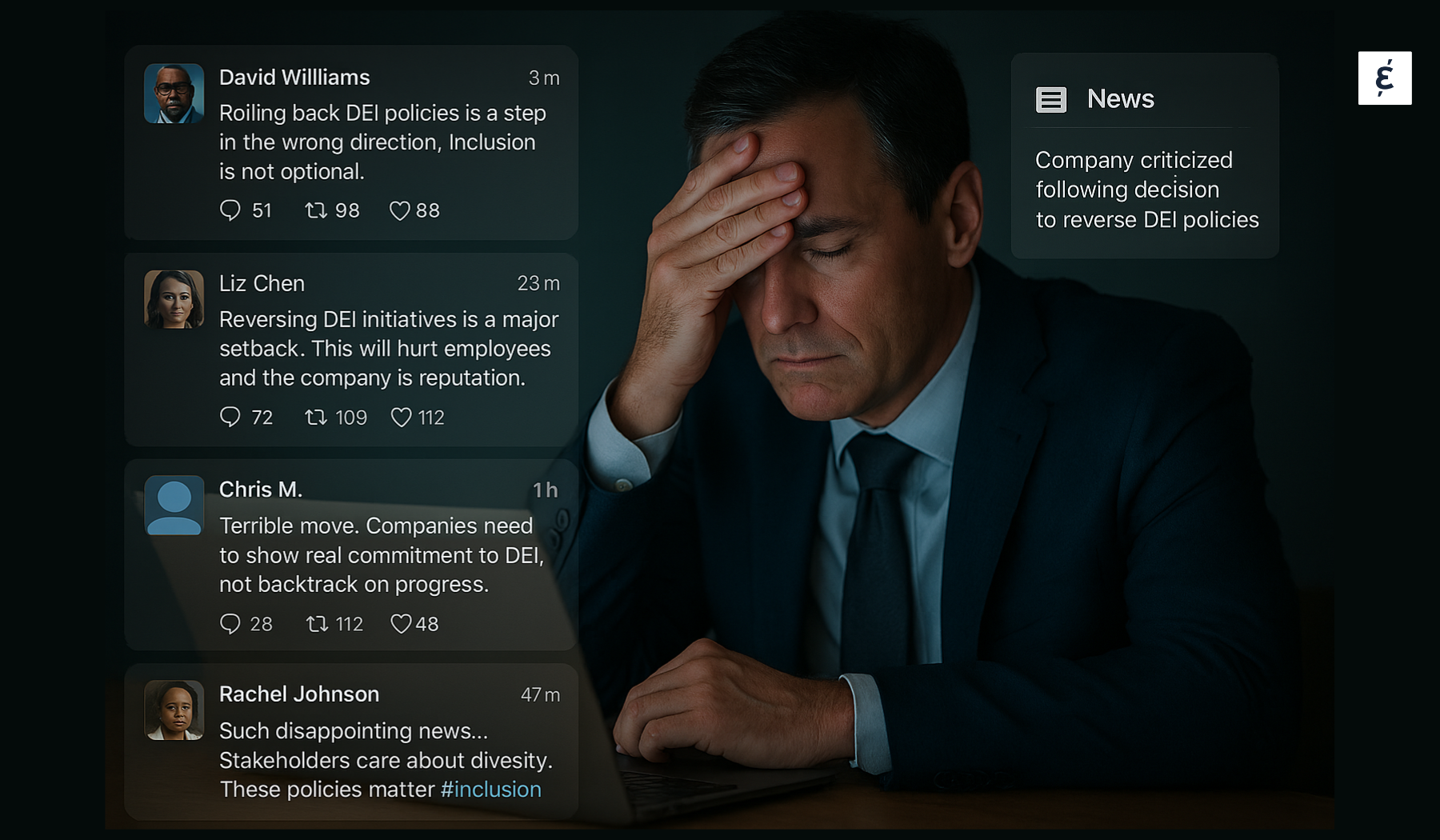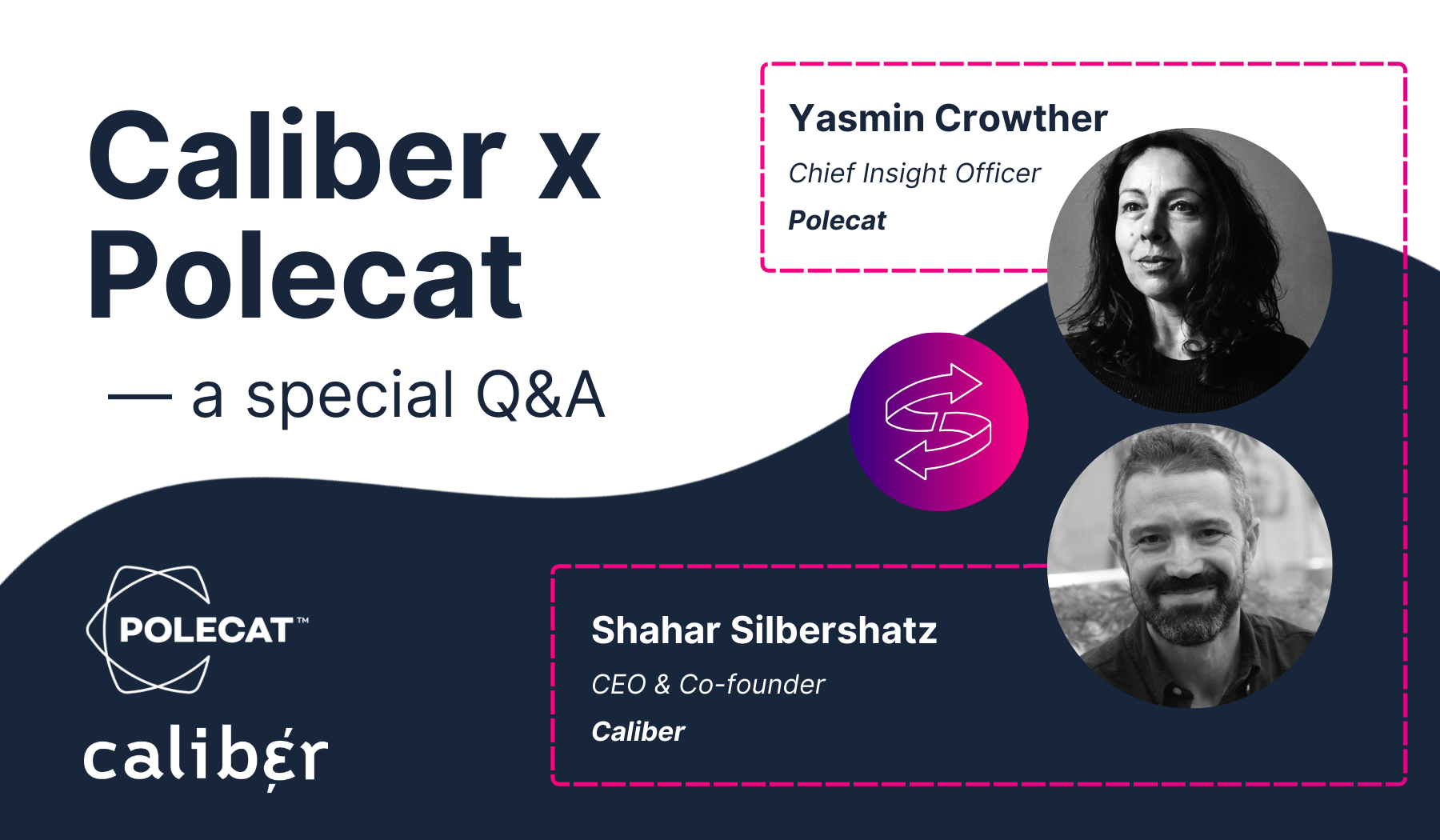

Who are your stakeholders, and how well do you truly know them?
For corporate communicators and decision-makers, the answers aren’t always apparent.
The solution? Stakeholder segmentation.
Read on to discover what it is and why it should appeal to any forward-thinking company.
Stakeholder segmentation involves breaking down your relevant audience into finely tuned segments, each with distinct characteristics, and applying those filters to get more specific sentiments and perceptions – and more actionable insights.
Here’s how to filter your stakeholders with Caliber – and why you should.
These are fairly commonplace in the world of stakeholder tracking. Caliber’s default segments include:
Segmenting your stakeholders by country may reveal cultural nuances, market dynamics, and regulatory differences that could significantly impact your strategies.
Going even further and segmenting stakeholders by region and district can help you pinpoint – and address – local challenges and opportunities, ensuring a more targeted approach.
Understanding age cohorts better allows you to craft your messages, products, and services to the specific needs and preferences of different generations.
Filtering stakeholders according to their sex can help tailor communication in ways that resonate with different genders and promote diversity and inclusivity.
Different education levels – high school, college, etc. – can help identify potential employees and talent groups that require distinct methods of communication and engagement, which segmentation can uncover.
In some cases, segmenting stakeholders according to their field of study can also enable more tailored talent-facing content and engagement strategies.
Segmenting by income levels allows you to tailor your messages and craft products and services that cater to different economic segments.
In the US, segmentation by race or ethnicity acknowledges the diverse cultural backgrounds of stakeholders, enabling cultural sensitivity in communications.
This is more granular and allows companies to filter stakeholders not only into standard customer segments but also into customized marketing segments and to identify influential audiences. Default and customized segments include:
In today’s polarized world, understanding the political leanings of stakeholders can help you navigate sensitive issues and tailor your messaging more appropriately.
Likewise, understanding where stakeholders stand on hot-button topics like social media or alcohol consumption can help you communicate better around some issues.
Filtering stakeholders according to, say, their favorite hobby, their preferred mode of transport or other behavioral patterns can give you a more granular picture of who they are and what they think.
Knowing where and how stakeholders hear about you – from social platforms to traditional media to niche websites – allows you to target them more effectively.
This is also granular but commercially relevant because it allows you to filter stakeholders not only into standard segments – such as business decision-makers or professionals across certain functions (e.g., marketing or finance) – but also into custom segments such as relevant purchasers, partners, suppliers, job seekers and opinion leaders.
Segmenting by industry allows you to assess what stakeholders in your own field think – and ensures your communication aligns with the unique demands of each sector.
Segmenting by industry allows you to assess what B2B stakeholders think – and ensures your communication aligns with the unique demands of each sector.
Filtering stakeholders into custom segments like key opinion leaders – i.e., journalists, investors, academics, policymakers, government and NGOs – means your comms team can understand them better and target them more effectively.
In B2B contexts, company size often dictates the scale of solution required. Segmentation according to this factor ensures alignment with business needs.
How deep should you go in stakeholder segmentation? As deep as you possibly can.
Demographic segmentation is fundamental. The real magic happens when you drill down into professional and behavioral segments.
Consider, for example, segmenting your stakeholders by subgroups that cut across these categories – such as by specific age ranges, educational backgrounds, industry subtypes, political leanings, and even how they became aware of your organization and familiar enough to answer a survey about you.
The possibilities are limitless, the insights invaluable.
And Caliber takes stakeholder segmentation to a whole new level by offering complete customization.
We provide the tools to break down data into segments that are most relevant to a company’s objectives, and that fit the company’s unique stakeholder universe.
For a healthcare company, we could segment stakeholders according to their area of expertise, from healthcare practitioners to human health, diagnostics to animal health.
For a tech company, we could filter audiences by those who identify as, say, IT decision makers, gamers, consumers, and tech optimists.
And for an aerospace company, we might segment stakeholders by field of expertise – such as customer service, digital, cyber, commercial, or defense.
Here are 5 reasons why stakeholder segmentation is the gold standard for truly actionable stakeholder intelligence at forward-thinking companies.
By segmenting your stakeholders, you can tailor your communication to address the specific needs and preferences of each group, ensuring your message hits the mark.
In-depth segmentation provides the insights you need to make informed choices that drive results.
With a detailed understanding of your stakeholders, you can allocate resources where they matter most, optimizing your efforts and investments. You can also save money by removing the need to conduct multiple studies with different audiences that are hard to compare.
Engaging with stakeholders becomes far more meaningful if you can speak directly to their interests, concerns, and aspirations. Segmentation enables tailored approaches that lead to happier, more satisfied and more loyal stakeholders.
Segmentation allows you to measure and evaluate the impact of your actions with precision, so you’ll know what works and what doesn’t. Equally, it allows you to identify potential risks early, even if only among a particular segment, so that you can proactively address them, safeguarding your reputation and success.
Segmentation facilitates the use of common measurements across departments and corporate functions, thereby removing silos and creating easier cross-stakeholder strategies and analyses. It also ensures your strategies align perfectly with your organizational objectives, leading to greater success.
What makes Caliber different is our ability to segment data into different groups and compare brand and reputation metrics across these groups in a consistent, continuous and logical way.
By contrast, most stakeholder trackers and reputation monitors offer disparate ad-hoc studies that are much harder to work with and simply not comparable.
Caliber’s Real-Time Tracker also gives companies comparable KPIs and allows them to target their activities at discrete groups of stakeholders – whether on an ongoing basis or to mitigate a sudden crisis.
Within companies, stakeholder segmentation also facilitates greater collaboration across departments responsible for stakeholder groups – from Marketing and Communications to Human Resources, Investor Relations to Public Affairs. That brings cost efficiencies and effectiveness to how companies build stakeholder support.
Caliber’s custom segmentation can even drill down into stakeholder behaviour. For instance, an energy company might want to track the perceptions of people who drive electric cars or have started taking shorter showers or invest in green stocks.
In conclusion, scratching the surface of stakeholder intelligence is insufficient. Filtering your stakeholders into finely tuned segments is the true path to sharper communication, better resource allocation, and more effective decision-making.
It’s also vital for managing stakeholder relationships better. In other words, stakeholder segmentation is a business intelligence tool that forward-thinking companies can ill afford to overlook.






© 2024 Group Caliber | All Rights Reserved | VAT: DK39314320